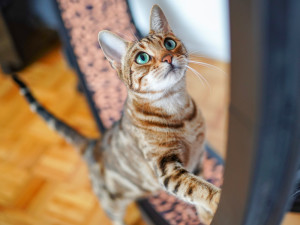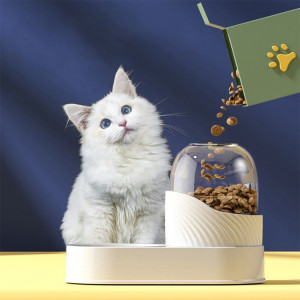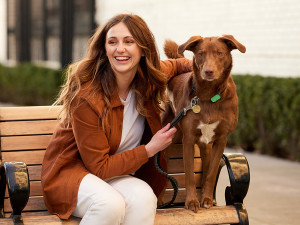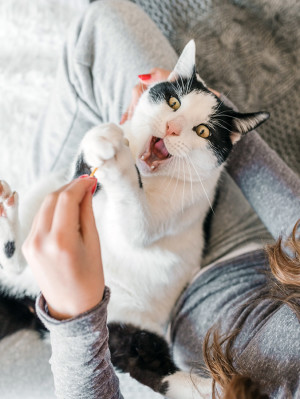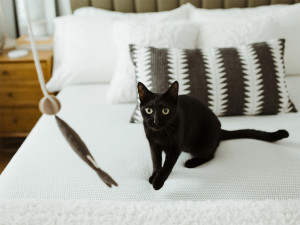Can AI Raise a Cat?
New research attempted to answer that question with surprisingly positive results.

Share Article
I remember seeing Steven Spielberg’s A.I. when it was released and being immediately puzzled by a few things. For one, I was ten so most of the plot and larger themes of humanity were lost on me. I was also confused about my feelings toward a glossed-up Jude Law and his somehow charming receding hairline, but I wouldn’t investigate that for some time. More than anything, though, I thought the idea of a world accompanied by widespread artificial intelligence seemed pretty silly. What a naïve young boy I was, especially considering my own impending hairline battle.
While it will (hopefully) be less dystopian, all signs point to AI becoming a standard companion to everyday life. In some respects, it already has, none of which carries the same appeal of a sleek and shiny-faced Jude Law, however. What was once thought of as a goofy thing tech bros dabbled with for fun, is being used on job sites and in homes every day. Face ID on cell phones, social media algorithms, spell check tools like Grammarly, Google’s search engine, smart home devices, and even Netflix’s recommendations all rely on AI programs to operate. I myself just asked ChatGPT for a killer Mediterranean bean salad recipe last night.
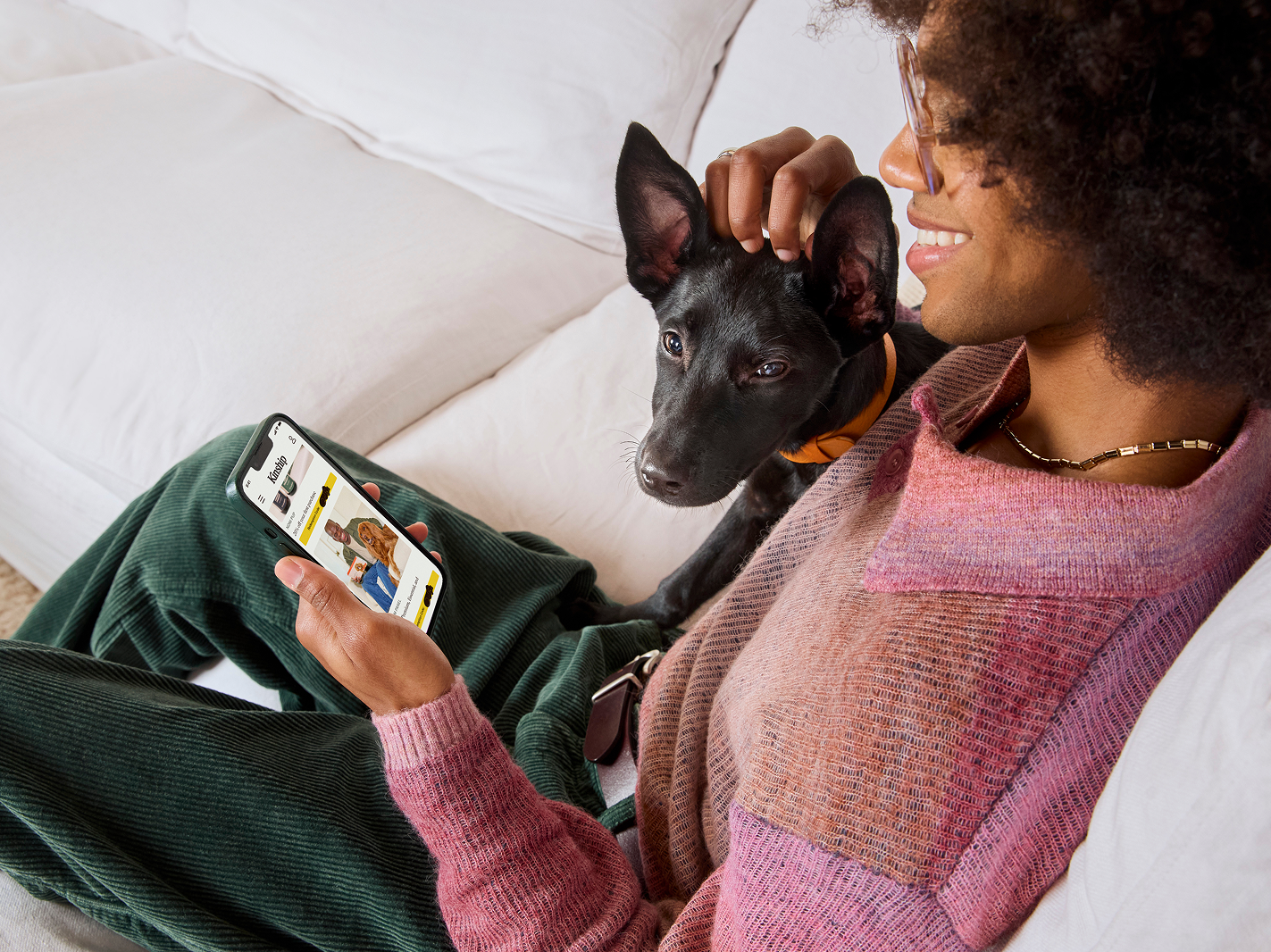
Get (totally free) deals for food, treats, accessories, tech, and way more pet parenting must-haves.
opens in a new tabAll of this is to say that we’re past the point of no return with this stuff. The question now is whether AI will ultimately be a positive or negative introduction to our lives. And what better representation of living with something that is at once beautiful and destructive than cats, who will cuddle up with you as quickly as they’ll knock over your favorite vase before leaving it shattered on the ground.
Recent research out of the UK examined this very connection by investigating if AI-controlled robotics could properly care for a pet cat. The results were somehow encouraging for both tech junkies and people, like me, who fear Skynet’s Judgement Day. Researchers discovered that while AI can certainly help care for cats in pretty remarkable ways, there is still no replacement for the human touch.
AI enters the world of pet care
The findings come courtesy of Cat Royaleopens in a new tab, a true marriage of the arts and sciences. Created through a collaboration between scientists from the University of Nottingham in England and artists at Blast Theory, Cat Royale devised an all-encompassing living environment supported largely by artificial intelligence. The work is one piece of a larger movement hoping to create more positive relationships and expectations of AI and our eventual cohabitation with it.
“It was part of what is called the Trustworthy Autonomous Systems Hubopens in a new tab, a big research project that is exploring what it takes for people to trust in artificial intelligence. Part of this was to engage artists to create artworks that get audiences to think about whether they trust AI,” explains Steve Benford, a professor of computer science at the University of Nottingham who led the research.
For 12 days, three cats lived within the space for six hours each day coexisting solely with one AI-backed robotic arm. While there, the cats, Ghostbuster, Pumpkin, and Clover, had their every need met with food, water, and air conditioning, along with various high ledges and cozy cubbyholes to explore. At the center of the mostly carpeted environment was a surprisingly limber robotic arm connected to an adaptable computer system. Every ten minutes, the arm would attempt to play one of various games with the cats determined by its AI. This included throwing balls, dangling features, offering snacks, ringing a bell, dragging a toy mouse or bird, and even introducing a feline classic: the cardboard box.
Then based on how the cats reacted to each offering, the AI learned which games they liked best and began presenting those at higher intervals. Of course, these actions weren’t entirely controlled by artificial intelligence. As Benford explains, “Like much AI, it is a combination of software and human input.”
His team’s computer system that tracked the cats’ movements was supported by human observers scoring each game and the cats’ responses to them. This information was then fed to the AI to help it gradually learn what the cats liked best. For example, Benford notes that Clover had a particular affinity for the orange bird toy that it eventually offered more frequently.
It was crucial for the research team to not only present these robotically fronted options but also create an environment for the pets to engage with. The end result was a near-symbiotic relationship showing the ideal version of a world intertwined with intelligent robots which the researchers called a “cat utopia.”
“We quickly learned that it’s not just about getting a robot to pick up and move toys but rather you need to design the wider world in which both robot and cats live in order to enable them to interact safely and successfully,” Benford says.
He adds that the utopia’s design was meant to benefit the performance of both parties with colors that relaxed the cats and helped them stand out against other objects for the AI. This ultimately included giving the cats alternatives to hanging with the robot arm all day. “It’s important that the cats can choose to engage with and withdraw from the robot on their own terms, which practically speaking, means providing them with high perches and walkways that were out of its reach,” Benford explains.
Will this soon be in homes?
Autonomous pet products like interactive toysopens in a new tab and automatic feedersopens in a new tab are already increasingly used in homes. So it’s fair to wonder if we might not be too far off from having household robot arms to care for our cats. Benford cautions that this reality is still a ways off. The Cat Royale installation was designed with specific colors, textures, and terrains to cater to the cats’ happiness and AI’s functioning but not human livability. “The wider point is that you might need to do quite some significant interior redesign if you wanted to accommodate such a robot in your own home,” he confirms.
The team’s research paperopens in a new tab detailing this installation and its findings was presented at the 2024 Computer-Human Interaction Conference in Hawaii, where it won the award for best paper. In it, Benford and his fellow researchers underscored the importance of human involvement in an environment like this, specifically in areas such as breakdown recovery and animal welfare. Not to mention, their role as an audience.
Going forward, Benford suggests that the use of AI and robotic technology can only be used as a tool in caring for pets rather than a replacement. He notes that pet parents can’t be home all of the time and technology like this might help provide comfort for animals while they’re gone. Still, it’s meant to only strengthen the bond between human and animal, not substitute it.
“Could the robot, for example, teach us about how cats like to play that would improve the ways in which we play with them? Could we derive meaning and satisfaction from understanding our animals better? So perhaps the solution is to design AI that requires human involvement that ultimately [leads] to [a] new human understanding of the world,” Benford wonders.
While Ghostbuster, Pumpkin, and Clover appeared to enjoy their time within Cat Royale’s utopia, it was not without human assistance. In addition to people scoring the games and cleaning up after the cats, there was always someone capable of operating the robot behind the scenes. On occasion, the human operator would have to improvise moves to get the robot out of trouble when toys got tangled up or the cats were playing too hard putting it under substantial strain. Senior staff from The Royal Society for the Prevention of Cruelty to Animals (RSPCA) were also present for all 12 days to ensure the animals’ safety.
“But this is typical of real-world AI applications in which there are usually humans involved behind the schemes in various roles. The key is to make sure that this human labor is rewarding and that it strengthens not weakens our relationships with our companion animals,” Benford says.
Benford hopes that Cat Royale and its findings inspire folks to explore more creative relationships between humans and AI while bringing a fresh perspective to the emerging debate over “responsible AI”. He adds, “We hope that they draw attention to the importance of adopting a multispecies viewpoint, encouraging research that considers how AI and robots can potentially benefit animals, plants, and the natural worlds, or how it might have unintentional consequences for them.”
In the meantime, there is no need to prep your pet and home for any life-altering sentient AI-produced robots. That is until they release the Jude Law model.

Sean Zucker
Sean Zucker is a writer whose work has been featured in Points In Case, The Daily Drunk, Posty, and WellWell. He has an adopted Pit Bull named Banshee whose work has been featured on the kitchen floor and whose behavioral issues rival his own.
Related articles
![Dog sitting on couch looking into the distance, Google nest cam in background]() opens in a new tab
opens in a new tabGoogle Nest Watches Your Pet For You When You’re Gone
“Somebody’s Watching Me” will be their new favorite karaoke song.
![A woman laughing while sitting on a bench with her dog.]() opens in a new tab
opens in a new tabWhistle’s New Smart Collar Is Giving Pets a Voice
Your dog can’t tell you if they don’t feel well, but the cutting-edge AI behind this health tracker can.
![Cat wandering outside in the grass.]() opens in a new tab
opens in a new tabWhy You Should Get Your Cat Microchipped—Even If They Live Indoors
And how to make sure your kitty’s is up to date if they already have one.
![]() opens in a new tab
opens in a new tabHow to Read Your Cat’s Poker Face
A guide to their not-so-secret tells.
![a cat making an excited face at a person's hand]() opens in a new tab
opens in a new tabYour Cat Can Make Nearly 300 Unique Facial Expressions, Study Finds
They’re not so mysterious after all.
![Black cat staring at a cat toy]() opens in a new tab
opens in a new tabHow to Play With Your Cat
Cat behaviorist Cristin Tamburo’s got a game plan.

